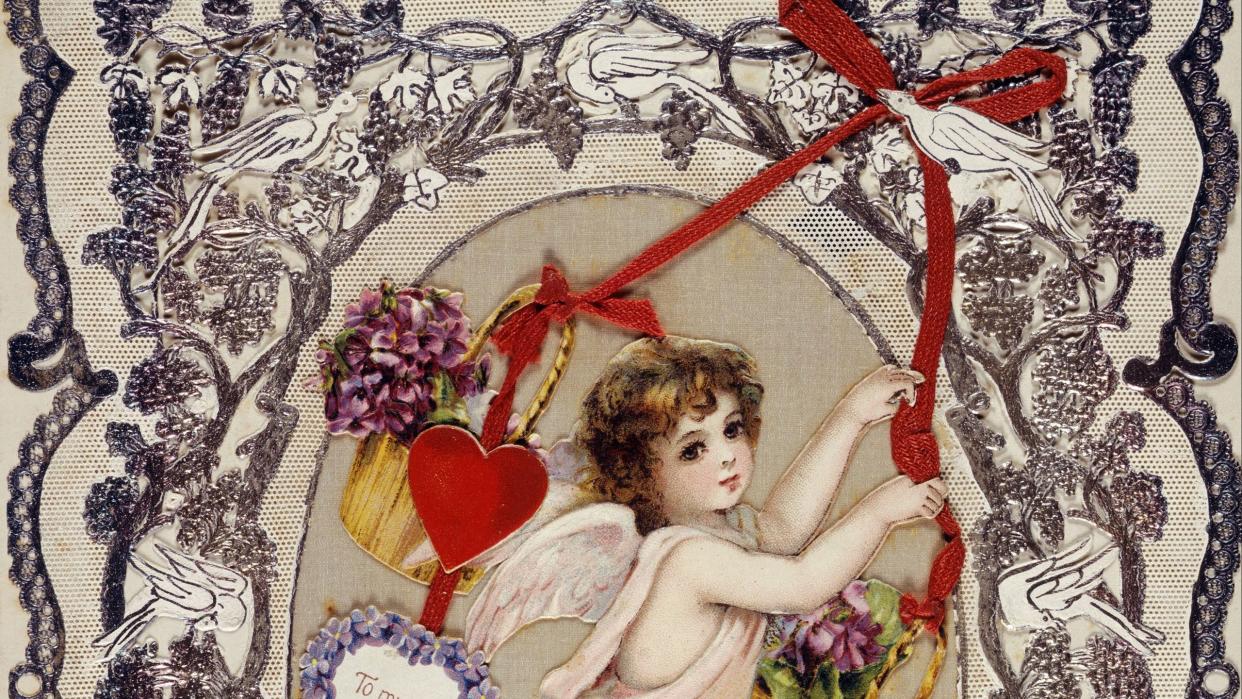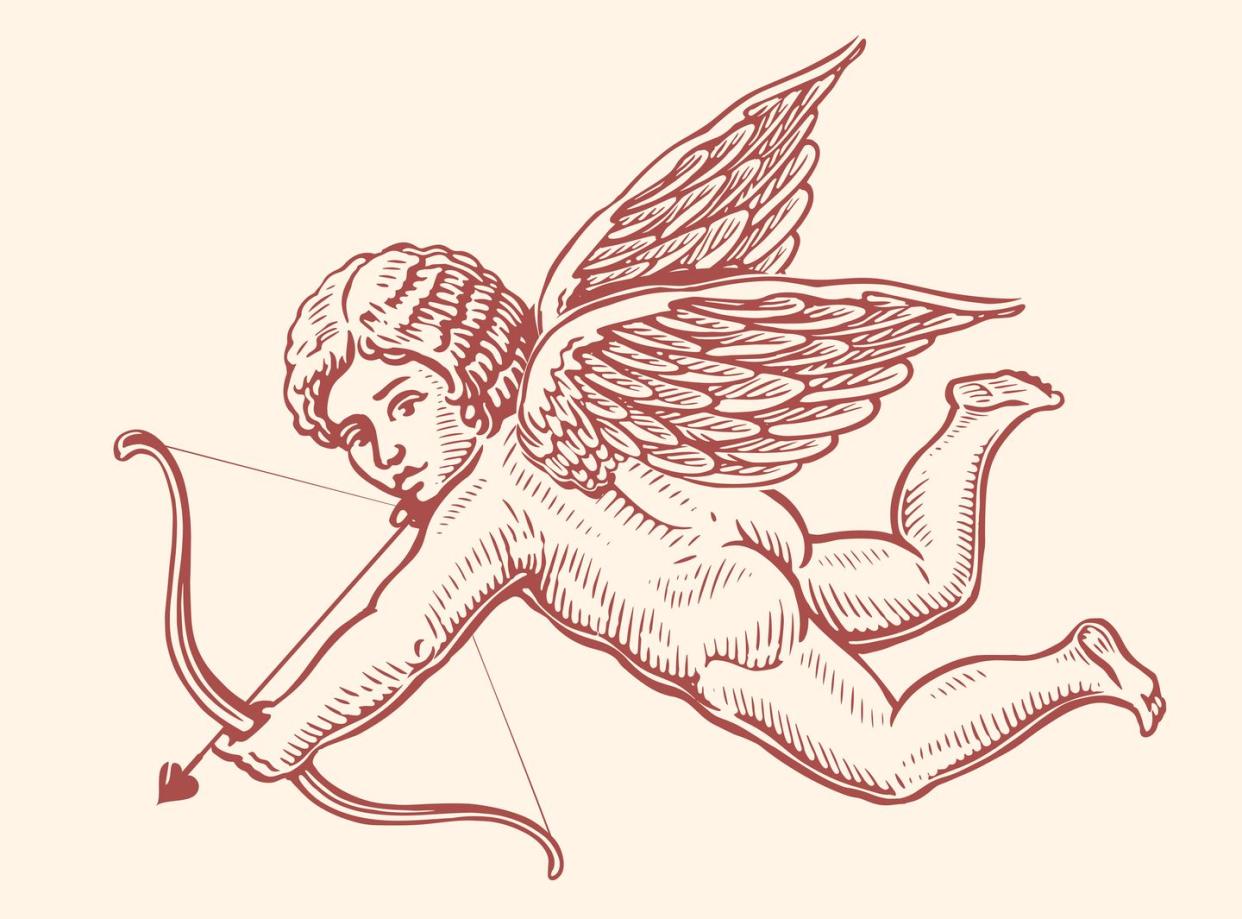Do You Know the Real History of Valentine's Day?

"Hearst Magazines and Yahoo may earn commission or revenue on some items through these links."
Almost everyone swoons over a good love story, but the history of Valentine's Day is, well, not quite that. We all know February 14 as a day of gift-giving, sweet treats, and romantic dinners—along with an abundance of Valentine's Day cards, of course.
Maybe you also grew up making Valentine's Day crafts with your family or baking cookies for class. Less familiar is why we celebrate the holiday of love in the first place. As with the history of Christmas, Valentine's Day's religious roots are sometimes sidelined in favor of more material interests. Perhaps it's not so surprising, then, that both holiday origin stories have a few things in common.
See, the way we celebrate Valentine's Day has transformed over time. The modern iteration of the holiday with all its rosy hearts and kisses, has quite a bubbly feel compared to its origin story, which is actually a bit... bloody. You won't find the real story of Valentine's Day in your favorite romantic movies—not only because it's a bit darker than most Hollywood fare, but also because it's a bit of a mystery!
Historians can't quite pinpoint the exact origin of the holiday, but they can trace how Valentine's Day traditions have evolved over time. Why does V-day fall on the same day in February every year? When and why did it become associated with romantic love? And what's a "Valentine" anyway? These are the questions burning in our hearts! We've gathered the facts and myths surrounding the story, and the final picture may surprise you.

What is the real story behind Valentine's Day?
Valentine's Day wasn't always all cherubs and hearts. As you probably know, the day is named after St. Valentine—but our story starts long before he came along. According to both The New York Times and History.com, the holiday's origin might stem from the ancient pagan festival of Lupercalia, which predated Christianity. Similar to the modern Valentine's Day holiday, the Roman festival was celebrated in the middle of February and involved feasting and pairing off partners.
However, unlike Valentine's Day, it was a bit of a raucous celebration filled with debauchery, blood, and sacrifice. For example, it was tradition for the hide of a sacrificed goat to be cut into strips and dipped in blood. Then, priests would go around slapping women with the strips. The practice was supposedly welcomed, as it was believed to make the women more fertile in the coming year. So, you still have a red association with the holiday, but definitely not the one we're used to today.
The theory goes that as Romans turned away from their pagan beliefs and embraced Christianity, the holiday evolved into one honoring St. Valentine. Lupercalia was eventually outlawed at the end of the 5th century, right around the time Pope Gelasius declared February 14 as St. Valentine's Day.

Who was Saint Valentine?
The identity of St. Valentine is also up for debate. According to NPR, Emperor Claudius II of Rome executed two different men named Valentine on February 14 (in two different years) during the third century. One account of St. Valentine says that he was a priest who was arrested for defying a Roman decree that forbade soldiers from marrying. He was executed for the crime of continuing to wed lovers in secret.
Another story contends that it was all to do with an imprisoned priest who fell in love with one of his visitors and began writing letters to her. According to History.com, the priest supposedly sent the woman a letter before his execution that he signed off, "From your Valentine." Both of these stories have romantic undertones and cannot be officially verified. All we can say is that Valentine's Day was named for a martyred St. Valentine.

Why do we celebrate Valentine's Day today?
Valentine's Day ultimately transformed into a holiday about romantic love, possibly thanks to the Romantic English poet Geoffrey Chaucer. The Times notes that Jack B. Oruch, a late University of Kansas English professor, made strong arguments to credit Chaucer with our modern ideas about Valentine's Day. Through his research, Oruch asserted that there was no significant written record linking romantic tradition to St. Valentine's Day until Chaucer wrote his 14th-century works "The Parlement of Foules" and "The Complaint of Mars." The former of which is a poem about birds choosing their mates on "Seynt Valentynes day." William Shakespeare has also been credited with popularizing the holiday's romantic associations.
By the mid-18th century, it was commonplace for friends and lovers to exchange small tokens and notes on Valentine's Day. In 19th century, the industrial revolution helped make printed Valentine's Day cards the hot new thing, per NPR. Finally, in 1913, Hallmark Cards of Kansas City, Missouri, began mass-producing valentines, and the world hasn't been the same since.

Who is Cupid?
When we think of Valentine's Day, visions of pink hearts, red roses, and one arrow-firing, diaper-clad chubby cherub instantly come to mind. But who is Cupid and how did he become the matchmaker mascot of February 14? Well, his roots are actually in mythology!
In Greek mythology, Cupid is the Greek god of love named Eros. As for his origins, just like with many gods, those accounts vary. In some early stories, Eros is believed to be the son of Chaos or Nyx. Later versions of the mythology claim he is the son of Aphrodite, goddess of love and beauty—by either Hermes, Ares, or Zeus. According to History.com, Eros was a handsome winged immortal who played with the emotions of gods and men by using golden arrows to ignite love and leaden arrows to incite aversion. Sound familiar?
Later, as the Romans reinterpreted Greek myths, Eros was renamed Cupid, which stems from the word for “desire.” He was known to them as the child of Venus and Mars, the goddess of love and the god of war. By the Hellenistic period, Roman art increasingly portrayed Cupid as a playful and mischievous putto—child-angels who are nude, usually winged, and representative of pure love. That sounds more like the Cupid we know!
Due to this association with love, those 19th-century Victorians began depicting the cherubic version of Cupid on Valentine’s Day cards in a trend that we still see today!
You Might Also Like
